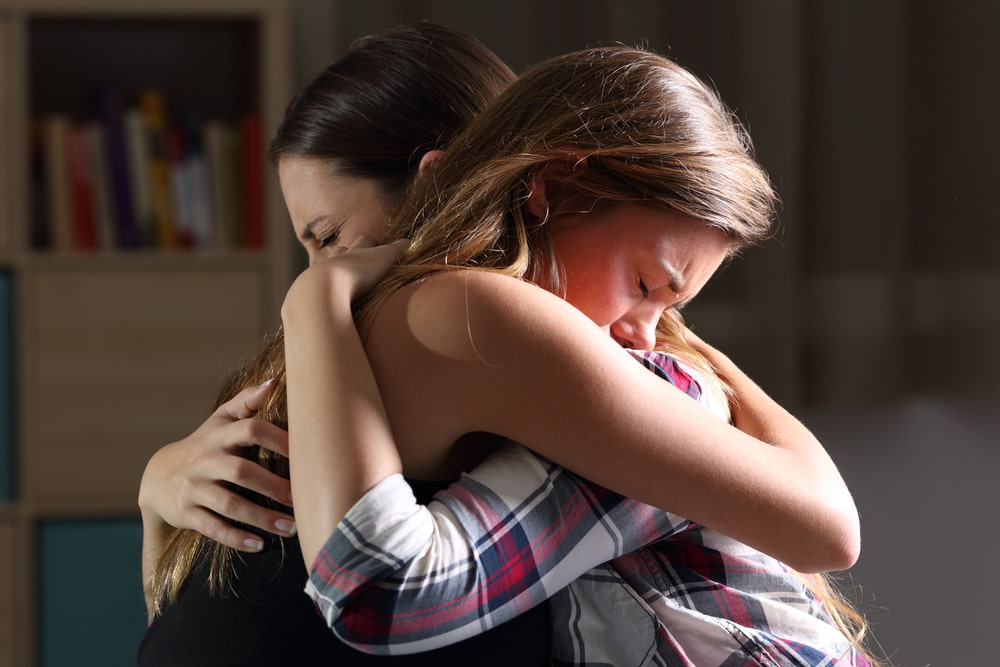Breaking away from your habits is rarely an easy undertaking. If you’ve ever tried to give up a pattern of behavior, you know that it takes much more than just making a decision. The same may apply to a cycle of addictive, love avoidant, or abusive relationship patterns.
The dynamic in most romantic relationships relies heavily on mutually compatible common attachment styles. You may wonder about the very nature of your common attachment style and why it developed the way it did.
By understanding how you relate to your romantic partners, you’ll be more likely to gain better control and a more realistic sense of self, which can become a basis for a healthy relationship. Keep reading to find out what it takes to discover your attachment style and potentially change it.
Can Adults Change Their Attachment Style?
You’re probably wondering about the meaning of the word “attachment”, and how many different styles there are. Attachment is a strong feeling, affection, and emotional connection to another person. It’s a trait that starts developing in infancy when a baby starts showing certain preferences towards a particular caregiver. After about ten months, the infant will start to grow bonds with other people. These early experiences are the foundation of your future intimate relationships.

These styles of emotional connection can be seen as persistent patterns of feeling, thinking, and behavior. There are four basic types:
- Anxious – this style is characterized by emotional neediness, a desperate need to be with others, and low-self esteem. It is usually linked with inconsistent parenting.
- Avoidant – the people described as avoidant tend to easily detach, prefer their independence over everything else, and have issues establishing or handling intimacy. They are usually afraid of commitment and may feel smothered when approached by people who care.
- Ambivalent – this style combines fear of abandonment and contradictory needs for distancing and belonging. As children, these people didn’t get the right kind of emotional attention. It may feel as if you’re stuck and waiting for others to make decisions for you.
- Secure – this style combines feelings of adequacy among people with the ability to be on their own, demonstrating high levels of self-acceptance, trust in other people, ability to self-reflect in intimate relationships, and to set clear and healthy boundaries.
What we know to be true is that most people can exhibit all the four styles above depending on who they are attaching too! Yes, most people have a common style, especially in a romantic relationship, however, the other styles are also present at times! Be careful not to lock yourself in with a “label” by taking an online assessment test and think you only have one type of attachment!
Do Attachment Styles Vary Across Relationships?
You may wonder if you’ve been consistent in your relationship patterns and whether your partners somehow influenced your attachment style. While your early experiences probably played a much more important role in shaping how you relate and behave in your intimate relationships, some partners could’ve played a similar role, stirring you towards the position you’re in at the moment.
Can Adult Trauma Change Your Attachment Style?
Childhood experiences, especially traumatic ones, seem to be crucial in shaping adult attachment styles, as well as other personality traits. As for traumatic events that occur in adulthood, you may expect a slight shift in your attachment pattern.
For example, in the case of a tragic loss of a significant other, you can feel guilty or lost when seeking emotional comfort. Or, after an unexpected and complicated divorce, you could lose faith in love or develop disdain and resentment towards your ex or any prospective future partner. Finally, after leaving an abusive relationship, you can become insecure and emotionally distant in your future relationships, or express a higher level of anxiety and neediness.
Since every traumatic event is tangled with a sense of loss, shock, and disorientation, it takes time to heal, and it can lead to temporary or permanent changes in how you relate to your partner, family members, and love interests, or friends. If you do have strong coping skills and a support network that will help you get back on track, you might not see so much of the disturbance.
Can Attachment Styles Change For The Worse?
Unfortunately, in some relationships, emotional patterns can become more dysfunctional over time. Many factors contribute, for instance, if your avoidant or anxious traits are consistently met with positive reinforcement, you may start to employ more avoidant, manipulative, or narcissistic tactics to get what you want.
You might start to make compromises and stay in unhealthy relationships despite emotional neglect or abuse.

How Do You Develop A Secure Attachment Style?
It’s possible to make significant changes over time and feel better about yourself – and yourself in relationship to others. If your primary issue is fear of abandonment, not being seen, not feeling like you are enough, then you may need to focus on self-acceptance. If your goal is to overcome strong emotional outbursts and feelings of inadequacy, your focus may be more on monitoring, controlling, and understanding your emotions.
- Learn And Practice Anger Management
A healthy way to curb outbursts would be to learn how to handle your emotions more tactfully and patiently. You can learn to acknowledge a level of disagreement or frustration without lashing out. Instead, learn to communicate your discontent respectfully with your significant other and with people in general. This may give your relationship a chance to survive and grow stronger.
- Learn How To Express Emotions Constructively
Learning how to express yourself emotionally doesn’t mean silencing your voice, suppressing anger, or expressing only the positive. It may be crucial to identify the source of your frustration, rather than to play the victim card, or the blame game. It involves a great deal of accountability, transparency, and honesty toward yourself and your partner. Messy conversations can be healthy.
- Adopt Mindfulness And Pay Attention To Your Thoughts
To overcome anxiety and identify ineffective or outdated coping mechanisms, you may practice a series of easy mindfulness exercises. Learn how to monitor your thoughts, control your breathing, name your feelings, and identify triggers. This may give you a better understanding of your inner unconscious or subconscious dynamic and provoke you to further explore your relationship.
- Get To Know Yourself Better
This usually means getting out of the ordinary and leaving your comfort zone. For example, you could try out a new hobby. Explore your favorite topics from different angles. You may want to introduce some risk into your routine. Let loose of your controls. Break some unspoken promises and see how it unravels. Try getting back on your feet despite your prejudices and insecurities. Equip yourself with some new insights and move on. See how it reflects on your relationship.
- Boost Your Self-Esteem
Every success has humble beginnings. You may seek out your validation out of something small and measurable. Start small, and then move on to bigger pursuits. You may help your self-esteem by changing your general lifestyle, taking care of your diet, exercise, and health in general, and writing a diary. Finally, you may reward yourself for making conscious positive decisions that go against your habitual, albeit dysfunctional gut feeling.
- Get Rid Of Unhealthy And Counterproductive Connections
When you’re committed to change and personal growth, you may need to clean up your connections. Hit the pause button on friendships that are robbing you of your time and energy. Identify toxic patterns of behavior. See how you can take better care of yourself. Focus on relationships that are based on trust and acceptance.
- Lean On The Support Of Friends And Family
When working out your way to finding new strategies to deal with emotional attachment, you may first seek resources for your needs of safety and acceptance. In an ideal world, you may wish to cling to support from a securely attached partner to help you shift your perspective. A more likely scenario would be to seek support from your close friends and family members in overcoming times of emotional crisis.
- Seek Professional Help
You don’t need to struggle all alone since the assistance of experienced relationship coaches is readily available. Although you may achieve significant progress on your own, leaning on the knowledge and experience of a non-biased listener might be the missing piece that can aid recovery and personal growth.

Where Can We Find Insightful Codependent Relationship Intensives?
When you aspire to break away from unhealthy attachment and relieve yourself of guilt, anxiety, and self-loathing, you can PIVOT at one of our retreats. Our relationship advocates can help you discuss and uncover many important topics such as the importance of respecting personal space and privacy in intimacy and overcoming emotional enmeshment in your relationship. With our help, you can discover the sources of conflicts and find new ways to reintroduce passion and excitement to your marriage.
You can work on your marriage intimacy or long-term relationship goals in a couple-focused setting or unpack your attachment history in one-on-one coaching sessions. Reach out to us to find out how you can benefit from our help!